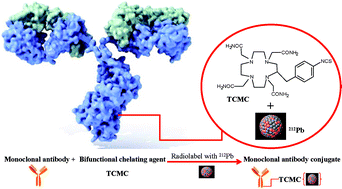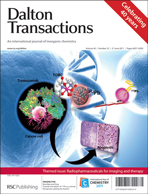Towards translation of 212Pb as a clinical therapeutic; getting the lead in!
Abstract
Targeted α-particle therapy offers the potential for more specific tumor cell killing with less damage to surrounding normal tissue than β-emitters because of the combination of short path length (50–80 μm) with the high linear energy transfer (100 keV μm−1) of this emission. These physical properties offer the real possibility of targeted (pre-targeted) α-therapy suitable for the elimination of minimal residual or micrometastatic disease. Targeted and pre-targeted radioimmunotherapy (RIT) using α-emitters such as 212Bi (T1/2 = 1.01 h) and 212Pb (T1/2 = 10.6 h) has demonstrated significant utility in both in vitro and in vivo model systems. 212Pb, a promising α-particle emitting source, is the longer-lived parent nuclide of 212Bi, and serves as an in vivo generator of 212Bi. The radionuclide has been successfully used in RIT and pre-targeted RIT and demonstrated an enhanced therapeutic efficacy in combination with chemotherapeutics, such as

- This article is part of the themed collection: Radiopharmaceuticals for imaging and therapy

 Please wait while we load your content...
Please wait while we load your content...